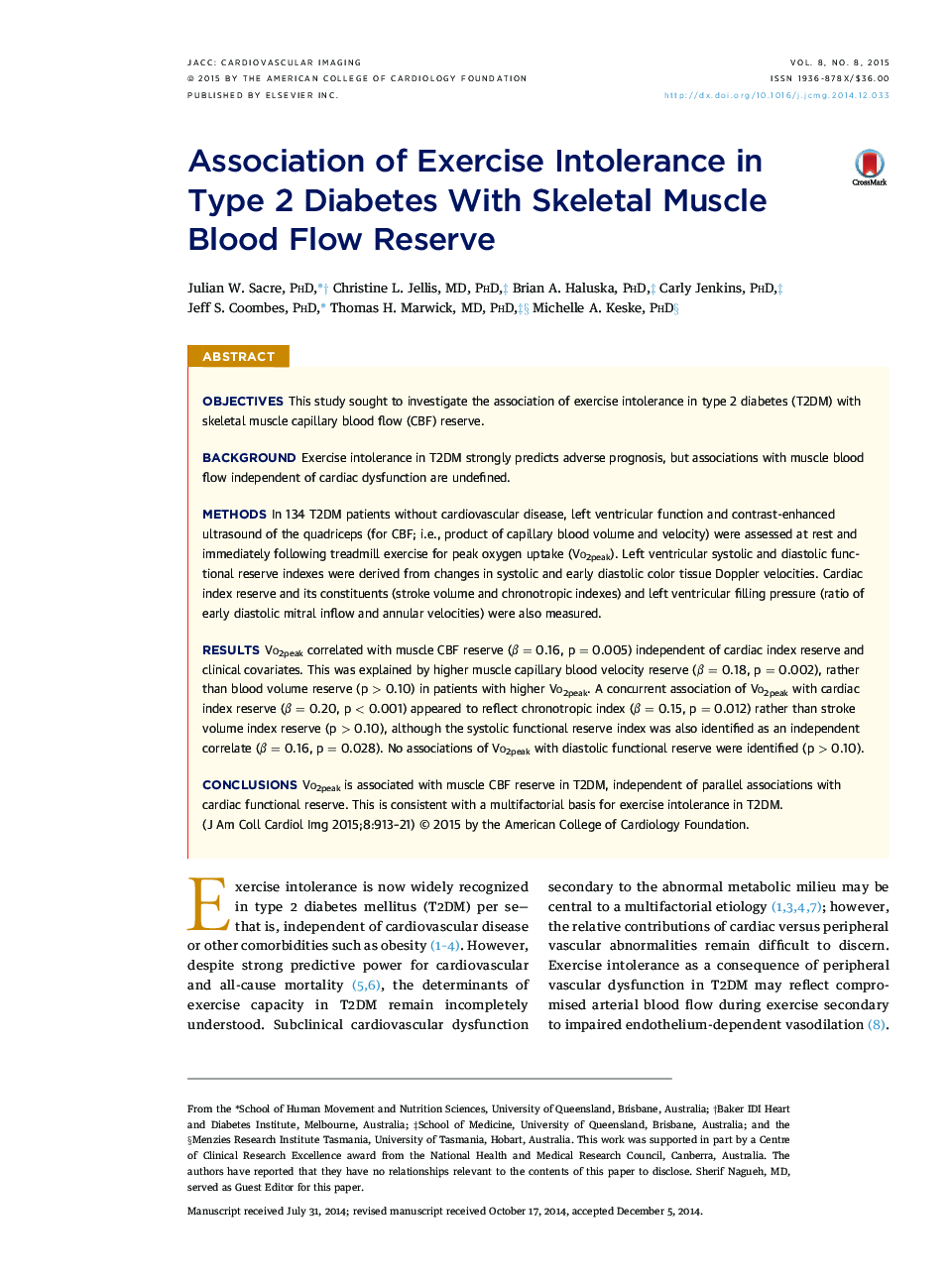| Article ID | Journal | Published Year | Pages | File Type |
|---|---|---|---|---|
| 2937822 | JACC: Cardiovascular Imaging | 2015 | 9 Pages |
ObjectivesThis study sought to investigate the association of exercise intolerance in type 2 diabetes (T2DM) with skeletal muscle capillary blood flow (CBF) reserve.BackgroundExercise intolerance in T2DM strongly predicts adverse prognosis, but associations with muscle blood flow independent of cardiac dysfunction are undefined.MethodsIn 134 T2DM patients without cardiovascular disease, left ventricular function and contrast-enhanced ultrasound of the quadriceps (for CBF; i.e., product of capillary blood volume and velocity) were assessed at rest and immediately following treadmill exercise for peak oxygen uptake (Vo2peak). Left ventricular systolic and diastolic functional reserve indexes were derived from changes in systolic and early diastolic color tissue Doppler velocities. Cardiac index reserve and its constituents (stroke volume and chronotropic indexes) and left ventricular filling pressure (ratio of early diastolic mitral inflow and annular velocities) were also measured.ResultsVo2peak correlated with muscle CBF reserve (β = 0.16, p = 0.005) independent of cardiac index reserve and clinical covariates. This was explained by higher muscle capillary blood velocity reserve (β = 0.18, p = 0.002), rather than blood volume reserve (p > 0.10) in patients with higher Vo2peak. A concurrent association of Vo2peak with cardiac index reserve (β = 0.20, p < 0.001) appeared to reflect chronotropic index (β = 0.15, p = 0.012) rather than stroke volume index reserve (p > 0.10), although the systolic functional reserve index was also identified as an independent correlate (β = 0.16, p = 0.028). No associations of Vo2peak with diastolic functional reserve were identified (p > 0.10).ConclusionsVo2peak is associated with muscle CBF reserve in T2DM, independent of parallel associations with cardiac functional reserve. This is consistent with a multifactorial basis for exercise intolerance in T2DM.
